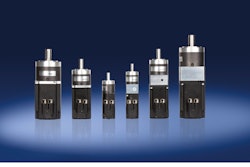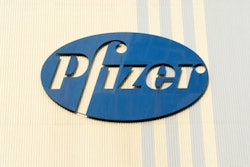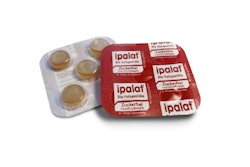
Sustainable business practices continue to gain importance throughout pharmaceutical facilities. A good example: GlaxoSmithKline's Cork plant in Ireland that's installed Emerson Process Management's Smart Wireless technology to monitor water usage.
The installation of Rosemount® wireless flow and pressure transmitters on two new storage tanks allows GSK to better understand water usage throughout the plant, to trial the wireless technology, and to create a network for cost effectively adding new process instrumentation in the future.
“GlaxoSmithKline is continuously looking to improve plant performance by increasing the number of parameters measured,” explains Emmett Martin, the company's site services & automation manager. “Water is a considerable overhead to the plant so it is important that we monitor flow rates to manage consumption, and to help identify any usage trends.”
The Cork manufacturing site produces bulk active ingredients for use in the formulation of prescription drugs. The existing water storage facility was too small and had no measurement instrumentation in place. Two new storage tanks were installed along with a new pipework infrastructure. The tanks are located some 300 meters from the main control room and there was no existing cabling in place. A wired installation would have required new power and data cables to be buried in trenches. By adopting the wireless technology, those costs were avoided.
GlaxoSmithKline had 10 Smart Wireless devices installed, including six Rosemount pressure transmitters, two Rosemount flow transmitters and two Rosemount level transmitters. The Smart Wireless technology integrates with the existing automation equipment. Flow data is transmitted every 30 seconds and pressure and level data every 300 seconds to a Smart Wireless Gateway positioned on the control room roof. This is connected using a serial connection to the existing DeltaV™ digital automation system that controls the plant utilities. From here the flow and pressure measurements are sent to a data historian and are available to plant operators for regular monitoring and reporting.
The new data enables GlaxoSmithKline to clearly identify water usage for different areas of the plant, providing a better understanding of the costs, and positioning the company to identify changes.
The new wireless infrastructure makes it easy and cost effective to add additional measurement devices without the need for new cabling. GlaxoSmithKline is looking at installing a wireless level device that will be added to the existing network.
“We regard the installation of wireless as a two stage process,” says Martin. “The first step is to establish a wireless network and let it prove itself over a period of time. The next step is to expand the network and use wireless whenever it is more cost effective than a wired alternative. We are more than satisfied with the solution, which is proving to be reliable with no signal loss. Based on a successful implementation, at some point in the future we are perhaps, looking towards a plant with no wires.” -Article supplied by Emerson Process Management. For more information about Smart Wireless, visit www.EmersonSmartWireless.com.



















